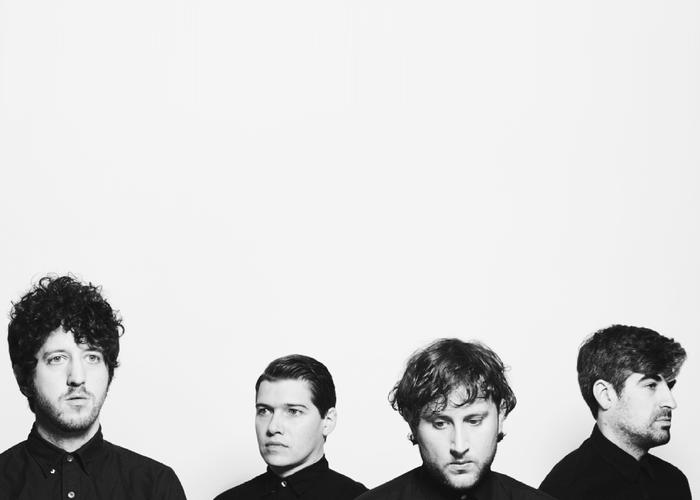Gracing the cover of Brooklyn band Small Black’s new record, a mysterious woman walks alone on the dunes at dusk, amid pockmarked sand. She's the subject of a found photo, one of many rescued with the warmth of a blow dryer and a fireplace, by singer Josh Hayden Kolenik after Hurricane Sandy flooded his family’s Long Island home. The faded image offers clues and invites viewers to construct their own narrative, one that escapes even the picture’s taker, Kolenik’s father.
To put it simply, Best Blues is an album about loss. The specific loss of precious people in our lives, but also the loss of memories and the difficult fight to preserve them. “I spent months trying to scan all these images & letters, most covered with ocean dirt, and in doing so discovered what people often find in their family’s past: that they are a hell of a lot like those who’d come before,” says Kolenik. The chorus of standout “Boys Life” echoes t...
Show the rest
Gracing the cover of Brooklyn band Small Black’s new record, a mysterious woman walks alone on the dunes at dusk, amid pockmarked sand. She's the subject of a found photo, one of many rescued with the warmth of a blow dryer and a fireplace, by singer Josh Hayden Kolenik after Hurricane Sandy flooded his family’s Long Island home. The faded image offers clues and invites viewers to construct their own narrative, one that escapes even the picture’s taker, Kolenik’s father.
To put it simply, Best Blues is an album about loss. The specific loss of precious people in our lives, but also the loss of memories and the difficult fight to preserve them. “I spent months trying to scan all these images & letters, most covered with ocean dirt, and in doing so discovered what people often find in their family’s past: that they are a hell of a lot like those who’d come before,” says Kolenik. The chorus of standout “Boys Life” echoes this sentiment with the refrain “pictures of youth/picturing you,” over a track that itself was an old demo re-discovered by accident by the band, during a late night jam session at a cabin in Upstate NY. The compassion of the record collects itself in the soft repeating mantra-esque hook in "No One Wants It To Happen To You".
The group’s third full length release, written & recorded at their Brooklyn home studio, nicknamed 222, showcases a mature band still evolving, and embracing the unpredictable. Kolenik (keys, vocals), Ryan Heyner (guitar, keys, vocals), Juan Pieczanski (bass, guitar) and Jeff Curtin (drums) have been recording, writing, and often living together, throughout the life of the band, establishing a closeness that has allowed them to achieve easy creativity and unspoken chemistry, After a year of recording, that band enlisted mixer Nicholas Vernhes (War on Drugs, Deerhunter) of Rare Book Room Studio to help complete the record.
Best Blues finds the band in their sweet spot: the smoky intersection of considered & vulnerable songwriting and loose, almost nonchalant ambience. The addition of piano flourishes, trumpet (Darby Cicci of The Antlers), hidden acoustic guitars and Kaede Ford’s ethereal vocals provide new dimensions to the band’s already expansive sonic palette. Cut-to-the-chase rippers “Back at Belle’s” & “Checkpoints” embody & build on the group’s signature gritty yet focused electronic sound. While the more pastoral tracks, such as “Between Leos,” & “XX Century,” skeletally based on recorded improvisations, find the band painting a more nuanced, assured aural portrait. The repeating of the line “twentieth century” on closer, XX Century, serves as a coda for the album, offering a simple summation of what Best Blues intent has been from the opening Casio stab :: an attempt to re-examine the past, but also one to let it go.
Hide the rest















